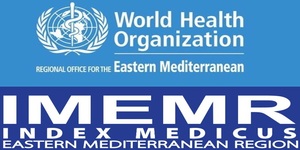Assessment of Spinal Cord Injured Persons, Quality of Life
DOI:
https://doi.org/10.36321/kjns.vi20131.2416Keywords:
assessment, spinal cord injuries, quality of lifeAbstract
Background: Spinal cord injuries are a global health problem, which strikes millions of people worldwide, and causing either a lifetime severs disability or death.
Objectives: To assess spinal cord injured persons quality of life.
Methodology: A descriptive quantitative study is carried out at Ibn AL-Kuff Hospital for spinal cord injuries, started in December 20th, 2009 to July 20th, 2010. A non-probability (Purposive sample) of (100) spinal cord injured persons, who were clients of Ibn AL-Kuff hospital for spinal cord injuries/ outpatient clinic after at least 6 months after their discharged in the hospital for medical follow-up and rehabilitation, within 16 years old or more. The data are collected through the use of semi-constructed questionnaire, which consists of three parts (1) Socio-demographic data of that consist 9-items (2) clinical characteristics in that consist of 10-items and (3) Main domains of the quality of life, which consist of six main domains: physical, psychological, level of independence, social, environmental, and spiritual domain, by means of direct interview technique with the spinal cord injured persons. Reliability of the questionnaire is determined through a pilot study and the validity through a panel of (15) experts. The data were described statistically and analyzed through use of the descriptive and inferential statistical analysis procedures.
Results: The findings of the present study indicate that the spinal cord injury affect the quality of life domains. The maximal affect presented by the social domain, followed by the level of independence domain, the psychological domain, then the physical domain. While the minimal effect, presented by spiritual domain, followed by the environmental domain. There is a significant relationship between gender, age, marital status after injury, level of education, occupational status after the injury, levels of injury, types of injury, duration of injury, associated diseases, follow-up and physiotherapist visits, use of assistive aids, and the possible complications after injury and quality of life domains. There is a non-significant relationship between residence, marital status before injury, occupational status before injury, socio-economic status, and causes of injury and quality of life domains.
Conclusion: The study concludes that the spinal cord injury most common occurs among persons in urban residential area than in those in rural. Spinal cord injury most occurs in male than in females. Spinal cord injury does not affect the continuity of the person's marital relationships. Also the study confirmed that the spinal cord injury affects negatively on the continuity of the persons jobs. In addition, the study indicates that the external trauma is the most common cause of the spinal cord injury. Moreover, paraplegic injury is the most common level in spinal cord injuries than tetraplegics injury. Also the incomplete injury is the most common type of spinal cord injuries. And, the spinal cord injury associated with many complications involves all the body systems.
Recommendations: The study recommends that an intensive comprehensive wide population-based studies be conducted to assess the spinal cord injured persons, quality of life. Also, an intensive comprehensive wide population-based education programs be conducted to support the nurses' knowledge and practice toward spinal cord injury management and rehabilitation. And health oriented mass media approach should be employed by the Ministry of Health to increase population knowledge and awareness of spinal cord injury. Health oriented mass media approach should be employed by the Ministry of Health to increase population knowledge and awareness of spinal cord injury.
Downloads
Downloads
Published
How to Cite
Issue
Section
License
Copyright (c) 2014 Diaa K. Abed Ali, Narmeen B. Tawfiq

This work is licensed under a Creative Commons Attribution 4.0 International License.













